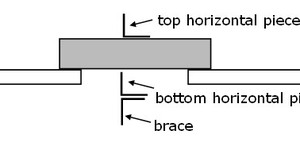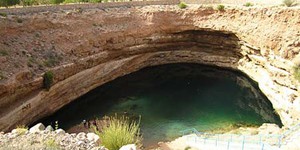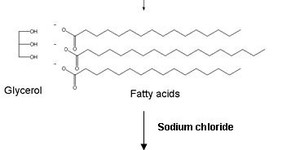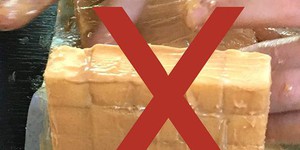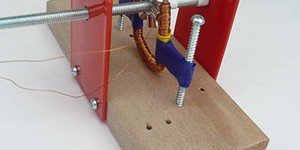Others Like “Separating Mixtures: Can You Design a Device to Do It?” (top 20 results)
|
Sorry, you don't get to use a jackhammer for this project, but you'll find out another way to break concrete (not to mention what makes it strongest).
Read more
If you have ever prepared a cup of coffee or tea with sugar, you have probably seen that the grains of sugar quickly dissolve and completely disappear in hot water. But sugar is not the only type of solid that can readily dissolve in a liquid. In fact, there are some types of rocks that can be dissolved by common liquids. It might be hard to imagine large, hard rocks being eaten away by some ordinary fluids, right? But it actually happens all the time! In this geology science project, you will…
Read more
Quick, what is your favorite color of M&Ms® candy? Do you want to know what dyes were used to make that color? Check out this science project to find out how you can do some scientific detective work to find out for yourself.
Read more
All living things have DNA inside their cells. How do scientists extract the DNA from cells in order to study it? In this science experiment you can make your own DNA extraction kit from household chemicals and use it to extract DNA from strawberries.
Read more
What do sand and cereal have in common? They are both granular materials, which means they are made up of solid particles, but they can actually flow like liquid. When two granular materials with very different-sized particles are mixed, you can actually separate each type by putting them in a rotating device called a tumbler. In this science project, you will examine how common household granular materials behave when mixed together in a moving container
Read more
Are all reds the same? Find out in this science fair project! Investigate if the pigments in one type of red flower are different from those in another type of red flower. Flowers contain an assortment of amazing chemicals that produce color. In this plant biology project, you will analyze the colored pigments in different plants' red flower petals using paper chromatography, and compare the pigments in the different flowers.
Read more
What is the first thing you do when you wake up on a cold, frosty morning? Snuggle down deeper under the covers? Animals, like puppies and piglets, do not like being cold either, but they do not have hands or blankets to wrap themselves up. So when animals get chilled, they change their behavior and do things like huddle—they curl up close to other animals. In this mammalian biology science fair project, you will see just how much huddling can help reduce heat loss.
Read more
Soap comes in many varieties and forms—from bars to bottles to boxes. The uses for soaps are just as expansive—from cleaning our hands, hair, and faces to a variety of household cleaning jobs, such as dishes or laundry. One thing all these different soaps have in common is their chemical origin; they were all made by mixing fat or oil with a strongly basic solution, such as lye. In this chemistry science project, you will carry out the chemical steps needed to transform coconut oil…
Read more
Have you ever been in an earthquake? What did it feel like? Did you jiggle back and forth? Up and down? Was there a jolt? Or a rolling motion? Come build a house Hansel and Gretel would love to eat, a special table to shake it on, and see how different soil types can amplify shaking.
Read more
The electricity you use to power everyday devices is generated by electrical generators. These fascinating and powerful machines rely on magnets to function. Though they might seem extremely complicated, once you finish this science project, you will understand how, why, and when they generate electricity.
You will build your own generator, make small changes in how exactly the magnets are placed, and test when moving magnets generate electricity.
Read more
|
Explore Our Science Videos
How to Make a Bristlebot
Make Your Own Lava Lamp
Paper Roller Coasters - Fun STEM Activity!


